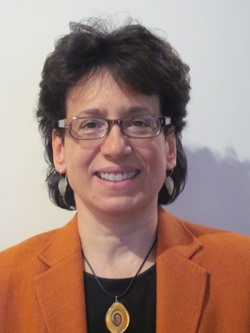Вы здесь
Matching for the donor's NIMA may improve outcomes in cord blood transplants

One of the advantages of cord blood (CB) as a source of stem cells for transplantation is the ability to use "not perfect" matches, which means that the donor's CB and patient do not have to match at all HLA antigens. As a result, more patients can find suitable CB units.
Our group asked whether, among the various mismatched CB units that a patient may have, could some lead to better outcomes than others? One thing we looked at was the interaction between the mother and baby during pregnancy. To evaluate this question, we retrospectively analyzed 1121 transplants provided by our public CB Bank, the National Cord Blood Program. We also collaborated with researchers from Leiden University in the Netherlands.
We know that the baby inherits one set of HLA types, called a haplotype, from the father, and one set from the mother. These are traditionally named Inherited Paternal Antigens or IPA and inherited Maternal Antigens or IMA. It is also well known that during pregnancy, cells and molecules can cross the placenta, so that there is "communication" between the cells of the mother and the baby: the baby's cells get exposed to the IMA that the baby has inherited from the mother, as well as the Non-Inherited Maternal Antigens or NIMA, which the baby's cells do not "know". The baby's cells "learn" to recognize the NIMA during pregnancy.
After the birth of the baby, an unrelated patient might receive the baby's CB for a transplant. Often the antigens of the patient and donor CB are not an exact match. Does it matter if the patient's antigens that do not match the baby's IPA and IMA, do match the NIMA of the baby's mother? Even though the NIMA are not inherited by the baby, the baby's cells are accustomed to being exposed to them.
Our study found that mismatched CB transplants with NIMA matches had better outcomes, in terms of the time it took blood counts to recover and overall patient survival. Additionally, it seemed that patients with blood cancers who received mismatched CB units with one NIMA match had lower rates of cancer relapse.
Based on these results, we concluded that NIMA-matched transplants may be the best choice for patients among various mismatched CB donors.
Our initial study only had a small number of NIMA matches that happened by chance. We then started exploring ways to include the NIMA when patients search for unrelated CB donors. Bone Marrow Donors Worldwide, an international registry of publicly donated CB, now includes NIMA in their search algorithm. We need to make clear that, in order to evaluate NIMA matches, we need to have the HLA typing of the mother's antigens for all of the CB donations in the registry. Not all public CB banks have recorded this information, but fortunately it has always been part of the standard records at the National Cord Blood Program, which is the world's largest public CB bank.


